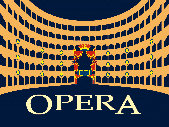SingleElectron primary dataset in NANOAOD format from RunG of 2016 (/SingleElectron/Run2016G-UL2016_MiniAODv2_NanoAODv9-v1/NANOAOD)
/SingleElectron/Run2016G-UL2016_MiniAODv2_NanoAODv9-v1/NANOAOD, CMS Collaboration
Cite as: CMS Collaboration (2024). SingleElectron primary dataset in NANOAOD format from RunG of 2016 (/SingleElectron/Run2016G-UL2016_MiniAODv2_NanoAODv9-v1/NANOAOD). CERN Open Data Portal. DOI:10.7483/OPENDATA.CMS.W8GF.6EVL
Data recorded in 2016 and published in 2024Dataset Collision CMS 13TeV pp CERN-LHC
Description
SingleElectron primary dataset in NANOAOD format from RunG of 2016. Run period from run number 278820 to 280385.
The list of validated runs, which must be applied to all analyses, either with the full validation or for an analysis requiring only muons, can be found in:
Related datasets
The corresponding MINIAOD dataset:Dataset characteristics
153363109 events. 71 files. 128.2 GiB in total.System details
NANOAOD datasets are in the ROOT tree format and their analysis does not require the use of CMSSW or CMS open data environments. They can be analysed with common ROOT and Python tools.
Recommended container image for analyses is available in the following locations (see guide):
gitlab-registry.cern.ch/cms-cloud/root-vncgitlab-registry.cern.ch/cms-cloud/python-vnc
Dataset semantics
Variable listHow were these data selected?
Events stored in this primary dataset were selected because of the presence of at least one high-energy electron, or at least one high-energy electron and one or more jets or tau.
Data taking / HLT
The collision data were assigned to different RAW datasets using the following HLT configuration.
Data processing
This NANOAOD dataset was processed from the RAW dataset by the following steps:
Step NANO
Release: CMSSW_10_6_26
Global tag: 106X_dataRun2_v35
Configuration file for NANO step ReReco-Run2016G-SingleElectron-UL2016_MiniAODv2_NanoAODv9
Output dataset: /SingleElectron/Run2016G-UL2016_MiniAODv2_NanoAODv9-v1/NANOAOD
Step PAT
Release: CMSSW_10_6_25
Global tag: 106X_dataRun2_v35
Configuration file for PAT step ReReco-Run2016G-SingleElectron-UL2016_MiniAODv2
Output dataset: /SingleElectron/Run2016G-UL2016_MiniAODv2-v2/MINIAOD
Step RECO
Release: CMSSW_10_6_8_patch1
Global tag: 106X_dataRun2_v27
Configuration file for RECO step recoskim_Run2016G_SingleElectron
Output dataset: /SingleElectron/Run2016G-21Feb2020_UL2016-v1/AOD
HLT trigger paths
The possible HLT trigger paths in this dataset are:
HLT_Ele105_CaloIdVT_GsfTrkIdT
HLT_Ele115_CaloIdVT_GsfTrkIdT
HLT_Ele145_CaloIdVT_GsfTrkIdT
HLT_Ele15_IsoVVVL_BTagCSV_p067_PFHT400
HLT_Ele15_IsoVVVL_PFHT350_PFMET50
HLT_Ele15_IsoVVVL_PFHT350
HLT_Ele15_IsoVVVL_PFHT400_PFMET50
HLT_Ele15_IsoVVVL_PFHT400
HLT_Ele15_IsoVVVL_PFHT600
HLT_Ele200_CaloIdVT_GsfTrkIdT
HLT_Ele20_eta2p1_WPLoose_Gsf_LooseIsoPFTau28
HLT_Ele22_eta2p1_WPLoose_Gsf_LooseIsoPFTau20_SingleL1
HLT_Ele22_eta2p1_WPLoose_Gsf_LooseIsoPFTau29
HLT_Ele22_eta2p1_WPLoose_Gsf
HLT_Ele23_WPLoose_Gsf_WHbbBoost
HLT_Ele23_WPLoose_Gsf
HLT_Ele24_eta2p1_WPLoose_Gsf_LooseIsoPFTau20_SingleL1
HLT_Ele24_eta2p1_WPLoose_Gsf_LooseIsoPFTau20
HLT_Ele24_eta2p1_WPLoose_Gsf_LooseIsoPFTau30
HLT_Ele24_eta2p1_WPLoose_Gsf
HLT_Ele250_CaloIdVT_GsfTrkIdT
HLT_Ele25_WPTight_Gsf
HLT_Ele25_eta2p1_WPLoose_Gsf
HLT_Ele25_eta2p1_WPTight_Gsf
HLT_Ele27_WPLoose_Gsf_WHbbBoost
HLT_Ele27_WPLoose_Gsf
HLT_Ele27_WPTight_Gsf_L1JetTauSeeded
HLT_Ele27_WPTight_Gsf
HLT_Ele27_eta2p1_WPLoose_Gsf_DoubleMediumIsoPFTau32_Trk1_eta2p1_Reg
HLT_Ele27_eta2p1_WPLoose_Gsf_DoubleMediumIsoPFTau35_Trk1_eta2p1_Reg
HLT_Ele27_eta2p1_WPLoose_Gsf_DoubleMediumIsoPFTau40_Trk1_eta2p1_Reg
HLT_Ele27_eta2p1_WPLoose_Gsf_HT200
HLT_Ele27_eta2p1_WPLoose_Gsf_LooseIsoPFTau20_SingleL1
HLT_Ele27_eta2p1_WPLoose_Gsf
HLT_Ele27_eta2p1_WPTight_Gsf
HLT_Ele300_CaloIdVT_GsfTrkIdT
HLT_Ele30_WPTight_Gsf
HLT_Ele30_eta2p1_WPTight_Gsf
HLT_Ele32_WPTight_Gsf
HLT_Ele32_eta2p1_WPLoose_Gsf_LooseIsoPFTau20_SingleL1
HLT_Ele32_eta2p1_WPTight_Gsf
HLT_Ele35_CaloIdVT_GsfTrkIdT_PFJet150_PFJet50
HLT_Ele35_WPLoose_Gsf
HLT_Ele36_eta2p1_WPLoose_Gsf_LooseIsoPFTau20_SingleL1
HLT_Ele45_CaloIdVT_GsfTrkIdT_PFJet200_PFJet50
HLT_Ele45_WPLoose_Gsf_L1JetTauSeeded
HLT_Ele45_WPLoose_Gsf
HLT_Ele50_CaloIdVT_GsfTrkIdT_PFJet140
HLT_Ele50_CaloIdVT_GsfTrkIdT_PFJet165
HLT_Ele50_IsoVVVL_PFHT400
How were these data validated?
During data taking all the runs recorded by CMS are certified as good for physics analysis if all subdetectors, trigger, lumi and physics objects (tracking, electron, muon, photon, jet and MET) show the expected performance. Certification is based first on the offline shifters evaluation and later on the feedback provided by detector and Physics Object Group experts. Based on the above information, which is stored in a specific database called Run Registry, the Data Quality Monitoring group verifies the consistency of the certification and prepares a json file of certified runs to be used for physics analysis. For each reprocessing of the raw data, the above mentioned steps are repeated. For more information see:
The Data Quality Monitoring Software for the CMS experiment at the LHC: past, present and future
How can you use these data?
You can access these data through XRootD protocol or direct download, and they can be analysed with common ROOT and Python tools. See the instructions for getting started in
Files and indexes
Disclaimer
These open data are released under the Creative Commons Zero v1.0 Universal license.
Neither the experiment(s) ( CMS ) nor CERN endorse any works, scientific or otherwise, produced using these data.
This release has a unique DOI that you are requested to cite in any applications or publications.







